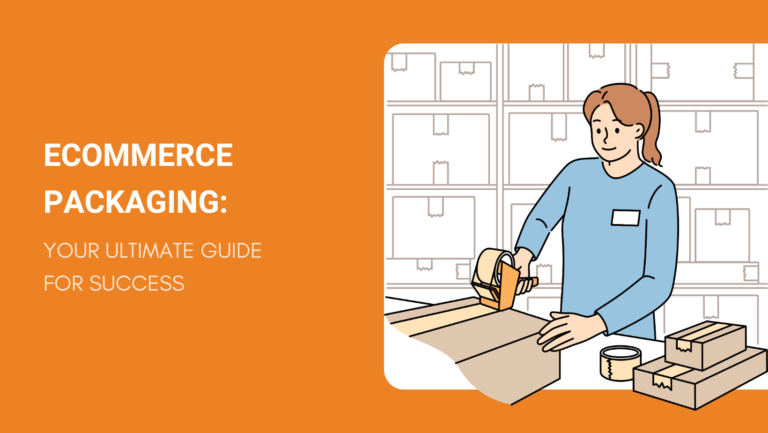Elevate your brand with eCommerce packaging. Learn how to protect your products and impress your customers with premium packaging options in this guide.
In the ever-evolving world of online retail, eCommerce packaging plays a crucial role in customer satisfaction, brand perception, and shipping efficiency.
Effective eCommerce packaging not only protects your products but also enhances customer experience and promotes brand loyalty.
From choosing the right materials to creating eye-catching designs, every detail matters in making a lasting impression on your customers.
This comprehensive guide aims to help you navigate the complexities of eCommerce packaging. You’ll learn about different packaging types, design best practices, and ways to optimize cost and enhance your customers’ unboxing experience.
Dive in to discover how you can elevate your eCommerce packaging strategy.
What Is eCommerce Packaging?
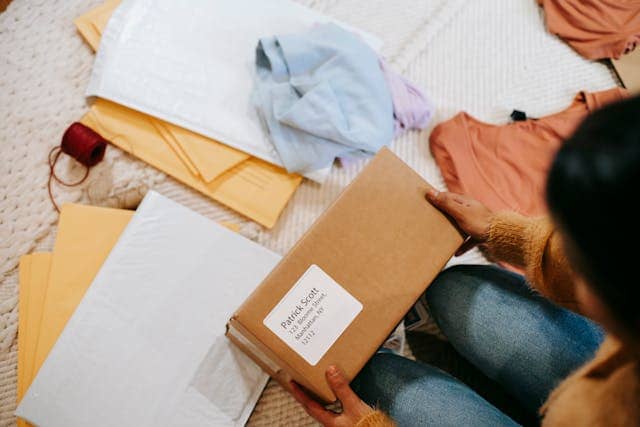
eCommerce packaging refers to the materials and methods used to protect products during shipping from online retailers. It ensures items arrive in good condition and helps create a memorable unboxing experience.
Key Components of eCommerce Packaging
- Outer Container: The box or mailer that holds the product. It needs to be durable and suited to the item being shipped.
- Infill Material: Includes materials like bubble wrap, air pillows, or packing peanuts to cushion the product.
- Inserts: Includes promotional materials, instruction manuals, and personalized notes.
Differences from Traditional Retail Packaging
Traditional retail packaging focuses more on aesthetic appeal and shelf presence, using materials like cardboard or plastic that highlight brand identity.
eCommerce packaging, on the other hand, prioritizes durability and functionality to withstand the rigors of shipping.
The Pros and Cons of Using eCommerce Packaging
Pros
- Protects products from damage during transit: Using sturdy materials like corrugated cardboard can prevent damage. This reduces the chance of returns, saving time and money.
- Enhances brand recognition and customer experience: Custom packaging with your logo and colors helps create a memorable unboxing experience. It can be used to convey your brand’s identity.
- Provides an opportunity for marketing and customer engagement: Including promotional inserts or QR codes inside your packaging can engage customers and encourage repeat purchases.
- Can be designed for sustainability and eco-friendliness: Using recyclable or biodegradable materials can appeal to eco-conscious consumers. More brands are focusing on sustainable eCommerce packaging, which aligns with global business strategies.
Cons
- Additional cost for materials and design: High-quality, custom packaging can be expensive. This may affect your profit margins, especially for small businesses.
- Potential for excessive waste if not designed properly: Overly large or unnecessary packaging can generate a lot of waste. It’s important to optimize the size and material to minimize environmental impact.
- Requires careful planning and logistics coordination: Coordinating the production and storage of custom packaging can be complex. You’ll need to ensure the packaging aligns with your logistics and fulfillment processes.
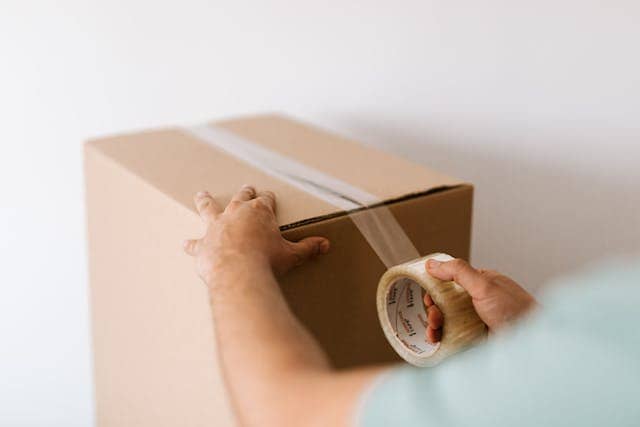
Types of eCommerce Packaging
Different types of eCommerce packaging play crucial roles in protecting products, enhancing brand image, and ensuring efficient shipping.
Primary Packaging
Primary packaging is the first layer of packaging that directly contacts the product. This type includes bottles, cans, wrappers, and boxes. It’s essential for preserving the product’s integrity and quality, especially for items like food, cosmetics, or electronics.
For eCommerce, choosing suitable primary packaging involves considerations such as material durability, protection against tampering, and compliance with industry standards.
It also serves as an opportunity for branding, as attractive designs can enhance customer satisfaction.
Secondary Packaging
Secondary packaging groups together primary packages for additional protection and convenience during shipping. Common examples are boxes, cartons, and shrink wraps.
This layer not only provides extra cushioning and prevents damage but also aids in organizing multiple items into single shipments.
Effective secondary packaging enhances the unboxing experience for customers. It offers a chance for additional branding and can include logos, colors, and other design elements.
Furthermore, secondary packaging is vital for eCommerce as it must withstand various handling and transportation conditions, ensuring that products remain intact during the entire shipping process.
Tertiary Packaging
Tertiary packaging is geared towards bulk shipping and transportation efficiency. This type includes pallets, crates, and containers to consolidate large quantities of products for storage and distribution.
The primary function is to facilitate the safe and organized movement of goods.
In logistics and supply chain management, tertiary packaging is critical. It ensures the stability of loads, reduces the risk of damage during transportation, and simplifies the handling process.
Pallets and crates allow for easier stacking and movement using equipment like forklifts, making them indispensable for any eCommerce business dealing with large-scale shipping.
How to Design Effective eCommerce Packaging
When designing eCommerce packaging, it’s essential to balance functionality and aesthetics. Your packaging should protect the product and offer a visually appealing unboxing experience.

Durable Materials
Select materials that ensure your product reaches customers in perfect condition. Common options include poly bags, corrugated boxes, and padded mailers.
For instance, poly bags are great for non-fragile items, while corrugated boxes are excellent for heavier items.
Visually Appealing Designs
Your packaging should reflect your brand’s image. Utilize custom eCommerce packaging to include your logo, brand colors, and typography. Adding elements like tissue paper inside the box can enhance the unboxing experience.
Sustainable Options
Eco-friendly packaging not only helps the environment but also appeals to conscious consumers. Choose recyclable materials and minimize excess packaging. This approach is increasingly important as customers value brands committed to sustainability.
User-Friendly Features
Incorporate features like easy-open tabs and resealable elements. These additions improve the customer experience by making the package easier to access and reuse.
Effective Branding
Make your package memorable to encourage repeat purchases. Add personalized messages or promotional inserts. You can use packaging as a marketing tool to build brand recognition and loyalty.
How to Optimize Cost and Efficiency in Packaging?
Ecommerce owners can significantly reduce costs and improve efficiency by focusing on key areas such as right-sizing packaging, automation, bulk purchasing, streamlining supply chains, and optimizing packaging design.
These practices enhance both the economic and environmental aspects of packaging.
Right-Sizing Packaging
Right-sizing packaging involves designing packaging that fits your products perfectly, reducing waste and shipping costs.
This practice not only cuts down on material usage but also lowers transportation expenses by minimizing package dimensions and weight.
To achieve right-sizing, measure your products accurately and use tools like CAD software to design custom-sized packaging.
Implement industry best practices, such as using adjustable compartments or multi-depth cartons, which are essential in ensuring that your packaging is neither too large nor too small.
Automation in Packaging
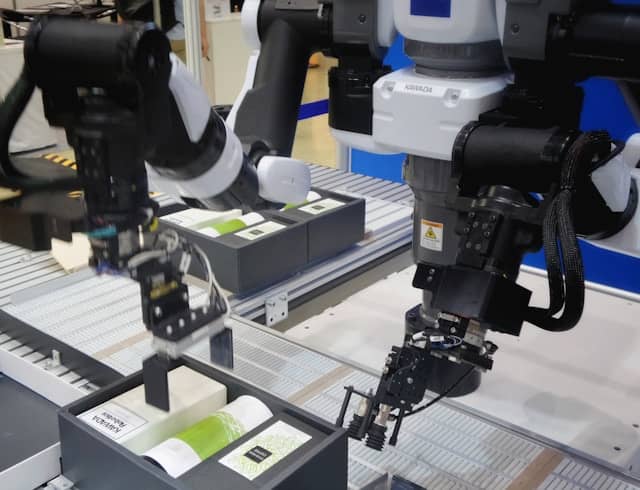
Automation in the packaging process brings substantial benefits, including increased speed and consistency.
By integrating automated systems, you can streamline tasks such as constructing cartons, inserting dividers, and sealing boxes, which leads to higher productivity and reduced labor costs.
For example, automated packaging lines can handle up to 150 packages per minute, far surpassing manual capabilities.
Technologies like robotic arms and conveyor systems contribute to these efficiencies. Implementing such systems can initially be costly, but they offer long-term savings and operational improvements.
Bulk Purchasing
Purchasing packaging materials in bulk can lead to significant cost savings. By buying larger quantities, you can negotiate better prices with suppliers, reducing the cost per unit. This strategy also ensures a steady supply of materials, preventing production delays.
Negotiate with suppliers for volume discounts or long-term contracts to secure lower rates.
Effective inventory management, like setting up a reorder point system, helps you maintain optimal stock levels and avoid excess inventory or stockouts.
Streamlined Supply Chain
Streamlining your supply chain improves efficiency and reduces costs. Techniques such as just-in-time delivery and vendor-managed inventory ensure that materials arrive exactly when needed, minimizing storage costs and reducing waste.
Collaborate closely with suppliers to improve communication and reliability. Utilize software solutions for supply chain management to track inventory levels, forecast demand, and coordinate logistics.
Packaging Design Optimization
Optimizing your packaging design not only enhances cost-efficiency but also boosts customer satisfaction.
Use sustainable materials, like biodegradable or recyclable options, to appeal to eco-conscious customers and reduce environmental impact. Minimize excess packaging by selecting the right materials and eliminating unnecessary components.
Consider implementing minimalist design principles, which emphasize simplicity and cost reduction without compromising protection or appeal.
Case studies have shown that businesses adopting such strategies often see a 10-20% reduction in packaging costs. This not only saves money but also improves your brand’s sustainability profile.
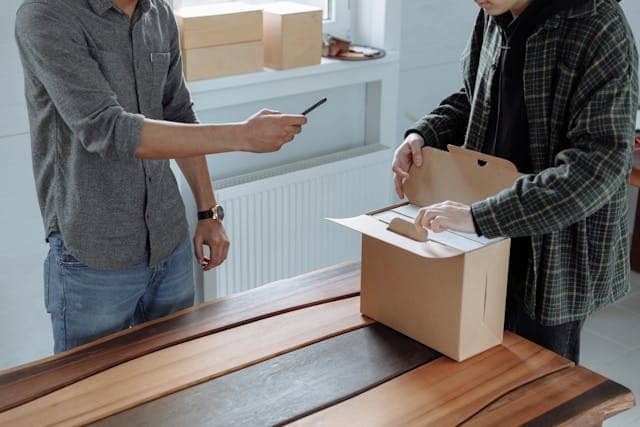
How to Enhance Your Customers’ Unboxing Experience?
Enhancing the unboxing experience can significantly boost customer satisfaction and loyalty. Careful attention to packaging details can turn a simple delivery into a memorable event, encouraging repeat purchases and social sharing.
Creating Memorable Unboxing Moments
Creating a memorable unboxing experience is crucial for customer satisfaction. Elements like branded tissue paper, personalized notes, and attractive packaging elevate the experience.
For instance, including a handwritten thank-you note can make the customer feel valued.
Studies show that 61% of consumers are more likely to repurchase from a brand that offers personalized packaging. Companies like Apple have mastered this by providing sleek, elegant packaging that creates anticipation and excitement.
A great unboxing experience can encourage social sharing, turning customers into brand advocates. Designing “Instagrammable” packaging with vibrant colors, unique designs, and clever branding can make customers want to share their purchases online.
Studies reveal that 40% of consumers are influenced by social media when it comes to purchasing decisions. Brands like Glossier and FabFitFun leverage beautifully designed packaging to gain attention on platforms like Instagram, boosting their visibility.
Adding Value with Samples and Extras
Including freebies like samples, promotional items, or discount codes can greatly enhance the customer experience. These extras add value and show appreciation, which can encourage repeat purchases.
For instance, including a new product sample can induce the customer to try something they might not have purchased otherwise.
According to consumer engagement studies, adding such items can increase customer loyalty by 20%. Birchbox, a subscription box service, is known for including curated samples that align with the customer’s profile, increasing satisfaction and engagement.
Customization Options
Offering customization options in your ecommerce packaging can make each unboxing experience unique. Custom messages, bespoke designs, and special packaging tailored to individual preferences can significantly enhance the experience.

Studies suggest 50% of consumers are willing to pay more for products that offer a personalized experience.
Brands like Etsy shops often allow customers to add personalized notes or choose custom-designed packaging, making each purchase feel special and exclusive.
FAQs about eCommerce Packaging
When it comes to eCommerce packaging, several important factors can influence your choices. It’s essential to think about product safety, the sustainability of the materials, cost-effectiveness, and branding potential.
What Factors Should I Consider When Choosing E-commerce Packaging?
First, consider the protection of your products. The packaging should safeguard items from damage during shipping. Look for sturdy and reliable materials such as corrugated boxes.
Sustainability is another key factor. Eco-friendly materials like recycled paper or biodegradable plastics can appeal to environmentally-conscious consumers. It’s important to balance durability with environmental impact.
Cost cannot be overlooked. You should aim for a packaging solution that meets your needs without exceeding your budget. Bulk purchasing from suppliers might help reduce costs.
Branding opportunities also play a significant role. Custom packaging with your logo and brand colors can enhance the customer experience. Unique designs leave a lasting impression and help in brand recall.
Lastly, shipping efficiency is crucial. Packaging should be lightweight and compact to minimize shipping costs. Efficient packaging can also speed up your fulfilment processes.
Where Can I Find E-commerce Packaging Ideas?
For inspiration, explore industry trade shows where you can see the latest trends and innovations. You might want to visit packaging design blogs to find creative ideas and practical tips.
Supplier catalogs can also be valuable. They often showcase a range of products and custom options. E-commerce platforms like Amazon and Etsy can provide examples of what works in your industry.
Visit design inspiration websites and industry publications. They offer insights and case studies demonstrating successful packaging strategies.
What Are Examples of Sustainable Packaging Solutions?
Biodegradable materials such as plant-based plastics and compostable packaging are excellent choices. These materials break down naturally and reduce environmental impact.
Recyclable packaging is another good option. Paper, cardboard, and certain plastics can be recycled, promoting a circular economy.
Reusable packaging, such as fabric bags or sturdy containers, can add value for your customers. It encourages reuse and reduces single-use waste.
Minimalist designs use fewer materials and emphasize simplicity. This approach can also give your brand a modern and eco-friendly image.
Opting for sustainable solutions helps the environment and can enhance your brand’s reputation. Customers increasingly prefer brands that show a commitment to sustainability.
Final Thoughts: Optimizing Your eCommerce Packaging Strategy
In today’s world, customer experiences are arguably the most crucial element of doing business. Your business could gain countless referrals and achieve exponential growth by simply making customers feel appreciated and well-served.
So, when all is said and done, great e-commerce packaging is worth investing in. It is the magic touch that customers will remember and keep coming back for every time they need the kind of products you sell.
Are you having a hard time finding suppliers that can implement your e-commerce packaging ideas? Let us help.
We are a full-service sourcing company with years of experience in branded packaging for e-commerce. You can count on us to find manufacturers that can deliver what you need.
Our warehouses are also well-equipped to receive your orders and implement your packaging instructions.To get started, send us a detailed list of your sourcing and packaging requirements and request a free quote.
